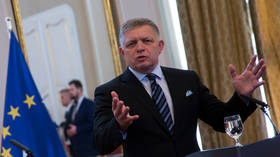
SAN FRANCISCO— United Airlines (UA) flight UA1620, operated by an Airbus A320, faced multiple go-arounds during its approach into San Francisco International Airport (SFO).
The aircraft departed from Seattle-Tacoma International Airport (SEA) and encountered repeated TCAS Resolution Advisories (RA) before safely landing.
The incident unfolded as the aircraft neared San Francisco (SFO). The flight crew first reported a TCAS RA and executed a go-around, later experiencing additional advisories on the second approach. Air traffic control (ATC) instructed the pilots to discontinue their approach after the situation grew concerning.
 Photo: United Airlines Airbus A320-232; N437UA@LAX;11.10.2011/623… | Flickr
Photo: United Airlines Airbus A320-232; N437UA@LAX;11.10.2011/623… | FlickrUnited Pilots Go-Arounds at SFO
As UA1620 approached San Francisco, the crew received a TCAS RA that required them to climb and abandon their initial landing attempt.
During the second approach, the aircraft encountered another advisory but continued toward the runway. About 30 seconds later, ATC issued a stern warning after detecting the aircraft’s descent becoming unsafe, instructing the crew to go around once more.
At the time of the second ATC intervention, the aircraft was approximately 700 feet above the ground and four miles from the threshold. The controller warned, “You’re getting dangerously close, go around.” The crew responded, initiating a climb and repositioning for another attempt.
After completing two go-arounds, UA1620 lined up again for runway 28L at San Francisco (SFO). On the third approach, the Airbus A320 landed without further incident.
ATC communications show both the crew and controllers maintaining situational awareness throughout, ensuring the aircraft could land safely after resolving the alerts.
 Photo: Bill Abbott | Flickr
Photo: Bill Abbott | FlickrATC and United Pilots Comms
Here’s a detailed transcription between San Francisco Air Traffic Controllers and United Airlines A320 pilots as recorded by LiveATC.net and flagged by You Can See ATC:
{ts:23}
Pilot (United 1620): 1620, visual right at 1620 San Francisco tower, traffic on the ones, 270.
ATC (Tower): At 1, 14 right for land, 28 right United 1620, cast.
{ts:42}
ATC: United 1620, I observe you on the go. Fly runway heading and maintain 3,000. Go around.
Pilot: Okay, maintain runway heading, 3,000, 1620.
{ts:47}
ATC: United 1620, when you’re able, can you say the reason?
Pilot: TCAS RA and then we were too high.
{ts:62}
ATC: United 1620, yeah. Thank you. Contact NorCal 135.1.
Pilot: 135.1, 1620.
{ts:66}
Pilot: 1620, back with you, level 3,000, runway heading.
{ts:77}
Pilot: 500, 1620, back with you, visual 28 left.
ATC: 1620, S tower, traffic on the ones, 26 at 1, 16 left for land, 28 left, cleared to land 1620.
{ts:103}
ATC: Exec 191, San Francisco tower, traffic on the ones, 26 at one right for land, cleared to land 28 right.
Pilot (Exec 191): We got the traffic on our left side for exec jet 191.
{ts:111}
ATC: 1620 or 1620T?
Pilot: Yeah, 1620.
{ts:121}
ATC: Advise completed with your resolution, traffic off your right for the parallel runway at 2,000, Gulfstream.
Pilot: 620, Roger.
{ts:126}
ATC: Exec 191, use caution, traffic off your left reporting a TCAS RA with you there for the parallel runway at 1,400.
Pilot (Exec 191): Copy that, we still got them in sight for exec 191.
{ts:143}
ATC: 1620, Roger. Advise complete with your resolution and your intentions to land if you’d like.
{ts:150}
ATC: 1620, you’re getting dangerously close, go around! Turn left, heading 260, maintain 3,100.
Pilot: Okay, go around; say again, please—260, 3,100?
{ts:168}
Pilot: 260, 3,100, 1620. Just to verify, 260, 3,100. Contact NorCal 135.1.
ATC: 135.1, United 1620.
{ts:178}
Pilot: 260 and 3,100, United 1620.
{ts:192}
ATC: Welcome back, climb 4,000, 1620. What heading do you need?
Pilot: 260 and climb 4,000.
{ts:211}
Pilot: Tower, hello, United 1620, visual 28 left.
ATC (Tower): Wind 270, 17, runway 28 left, cleared to land.
Pilot: Cleared to land, 28 left, United 1620.
Role of TCAS in Flight Safety
The Traffic Collision Avoidance System (TCAS) is designed to prevent mid-air collisions by issuing advisories to pilots when another aircraft is detected at a conflicting altitude. A Resolution Advisory (RA) directs pilots to climb or descend immediately, often overriding air traffic control instructions.
In busy airspace like that surrounding San Francisco International (SFO), TCAS advisories are not uncommon, but multiple alerts during consecutive approaches highlight the complexity of traffic management and pilot decision-making in high-density environments.
 Photo: Rush Hour at SFO | A United Airlines Airbus A320 arrives whi… | Flickr
Photo: Rush Hour at SFO | A United Airlines Airbus A320 arrives whi… | FlickrBottom Line
Safety outcome: No injuries or damage reported; TCAS worked as intended to prevent potential conflict.
Aircraft involved: United Airlines Airbus A320 (N481UA).
Route: Seattle (SEA) to San Francisco (SFO).
Event: Three TCAS RAs triggered during approach.
Actions taken: Two go-arounds before final safe landing on runway 28L.
Stay tuned with us. Further, follow us on social media for the latest updates.
Join us on Telegram Group for the Latest Aviation Updates. Subsequently, follow us on Google News
United Pilot Denied to Fly from San Francisco to Cancun: Here’s Why
The post United A320 Pilots Go-Around Twice at San Francisco Amid TCAS Warning appeared first on Aviation A2Z.


















